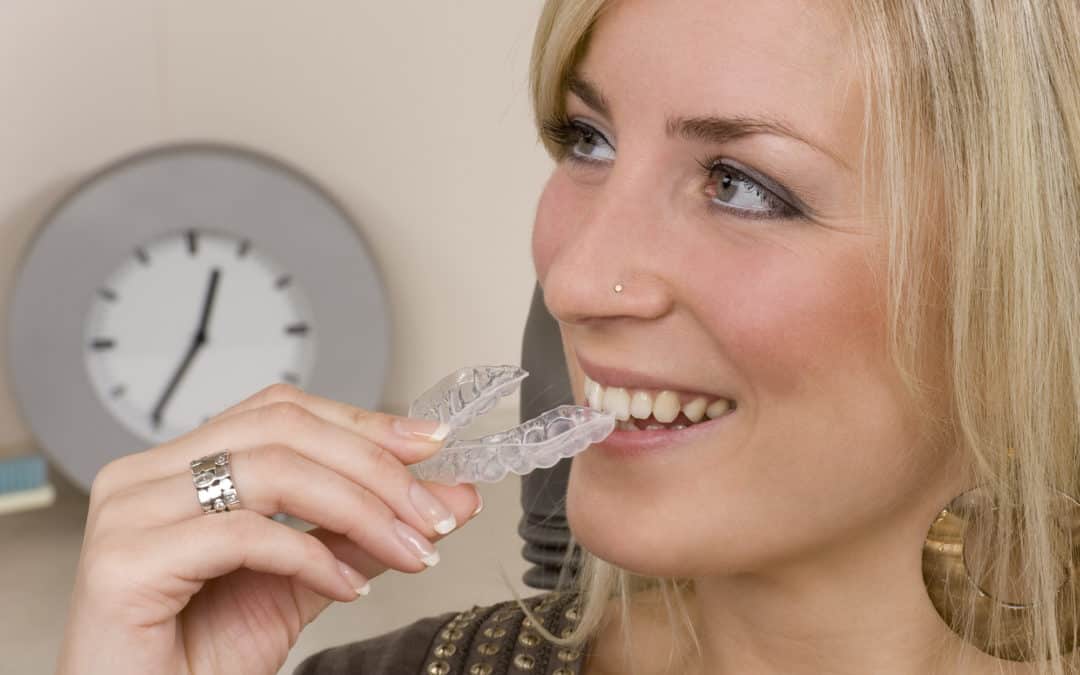Adults who want straighter teeth might feel embarrassed to learn about their options, but adults now make up over 50% of orthodontic patients.
If you want straighter teeth as an adult, Invisalign aligners are a common, virtually invisible, solution. When you choose aligners for straighter teeth, you need to know how to care for Invisalign.
Keep reading to learn more.
Cleaning Invisalign Aligners
The first thing to know about how to care for Invisalign is how to clean your aligners. Since the aligners sit over your teeth, they are susceptible to the buildup of bacteria that can impact your oral hygiene.
This bacteria can cause oral infections, unpleasant tastes, and unpleasant odors. To prevent this growth, Invisalign users need to clean their aligners regularly.
Each day, follow these steps to deep clean your aligners:
- Rinse aligners in room temperature or cold water to remove large particles
- Soak aligners with your preferred cleaning solution
- Brush and floss your teeth while the aligners soak
- After soaking, give your aligners another risk
- Finish by scrubbing your trays with a soft-bristled toothbrush
An Invisalign specialist should provide care instructions and some minor care tools. Follow the instructions from your specialist for the best results.
Invisalign Cleaning Tools
You can easily clean your Invisalign aligners at home with an aligner-friendly cleaning solution and a soft-bristled toothbrush.
Invisalign offers cleaning solutions made specifically to work with their aligners. Your orthodontist may sell these solutions as well.
Use a soft-bristled toothbrush to scrub your retainers to get rid of lingering cleaning residue. An abrasive toothbrush can damage trays leading them not to work properly.
What Can You Use to Clean Aligners?
Invisalign care is easier when you have a cleaning solution from the brand. However, there are various cleaning solutions you can use to soak your aligners.
Soap and Water
One of the easiest options for cleaning clear aligners is using soap and water.
Squeeze a small amount of liquid, gentle soap into warm water. Make sure the water is warm and not hot!
Stir to make a sudsy mixture and soak your aligners in the solution for about 20-30 minutes. Rinse the aligners clean afterward.
Vinegar and Water
A vinegar and water solution can also be used to rinse your aligners. To make this solution, mix one-part white vinegar with three parts of warm water.
Once again, the water shouldn’t be too hot. Hot water can damage the plastic on your aligners. Soak your aligners in the vinegar and water for about 20 minutes. Rinse with cool water after.
Baking Soda and Water
To create this solution, mix a tablespoon of baking soda with half a cup of water. With this solution, you’ll want to soak your aligners for 60 minutes.
Remove your aligners after the time limit and rinse them before putting them back in your mouth.
Other solutions are better options because they require less soaking time. It’s important to keep your aligners in your mouth for as much as possible to get straight teeth.
What NOT to Use to Clean Your Aligners
When you clean aligners, you need to know what not to use. The wrong solution can damage your aligners. Distorted Invisalign aligners won’t fit your teeth right and will set back your treatment.
If you need extra aligners due to this problem, you’ll be paying additional fees. Avoid these cleaning methods when caring for your Invisalign aligners:
Mouthwash
Mouthwash is a great solution for cleaning your mouth, so it should be good for your aligners, right? Wrong!
Mouthwash can damage your aligners. The coloring dye in mouthwashes can permanently stain the aligners. This will make Invisalign less appealing to wear.
After all, the point of wearing Invisalign aligners is to hide the straightening teeth process.
Toothpaste
It might seem natural to use toothpaste as an Invisalign aligner cleaner, but it’s not a good choice. Toothpaste contains abrasive ingredients that can damage aligners.
Not only that, but they can leave residue on your aligners and cause discoloration. Toothpaste on your trays might lead to an unpleasant taste and, therefore, bad breath.
Dishwasher
Cleaning your Invisalign aligners in the dishwasher might not be something you’ve thought of before, but some people consider this.
Dishwashers use very hot water that can damage clear aligners and cause discoloration. If your aligners are distorted, they won’t fit you properly.
Soaps With Added Dyes
Antibacterial soap is great for cleaning Invisalign aligners as long as they don’t include added dyes such as red, green, or blue. These dyes stain your trays.
Gentler solutions are always better to avoid Invisalign aligner damage.
How Often Should You Clean Invisalign Aligners?
Invisalign aligners need to be cleaned every day like your teeth. This helps to prevent bacterial growth and common oral health problems.
Ideally, you should scrub your retainers every time you remove them. This is not always possible if you have a busy schedule. The recommended cleaning schedule is:
- Once in the morning
- Once in the evening
In between, try to rinse your aligner in cold water before replacing it after you eat. Keep in mind that rinsing them after meals is not enough to avoid bacterial build-up. This is why you should always scrub your aligners when you can.
If you don’t regularly clean your Invisalign aligners, you could end up with plaque on them that looks like white film.
Additionally, you should clean your Invisalign case. Most aligner wearers consider their case a protective measure instead of a cleaning one.
However, your Invisalign aligner tray case can play an important role in keeping bacteria away. When you remove Invisalign aligners to eat, always store them in your case.
Doing so reduces the likelihood of bacteria blooming because there is a limit to air exposure. You can also soak your aligners in your case while you eat.
How to Care for Invisalign Aligners Explained
Invisalign aligners are a great alternative to traditional braces. However, if you want to benefit from straighter teeth, you need to follow proper care instructions.
Learning how to care for Invisalign aligners is key to successful treatment. To learn more about straightening your teeth with Invisalign from a Diamond Invisalign provider, contact us now.



